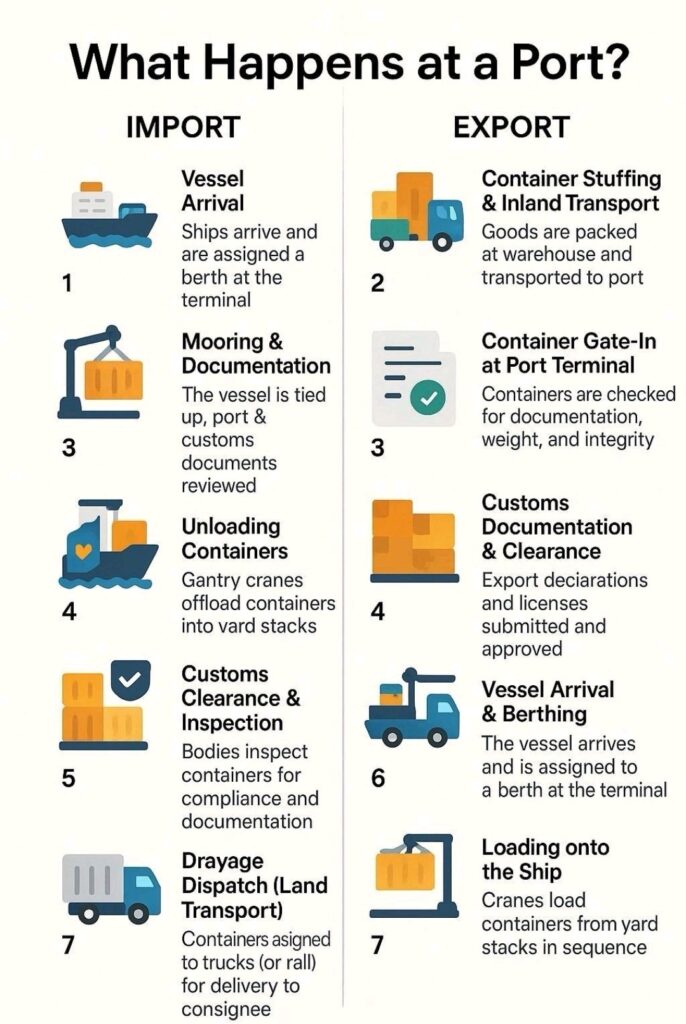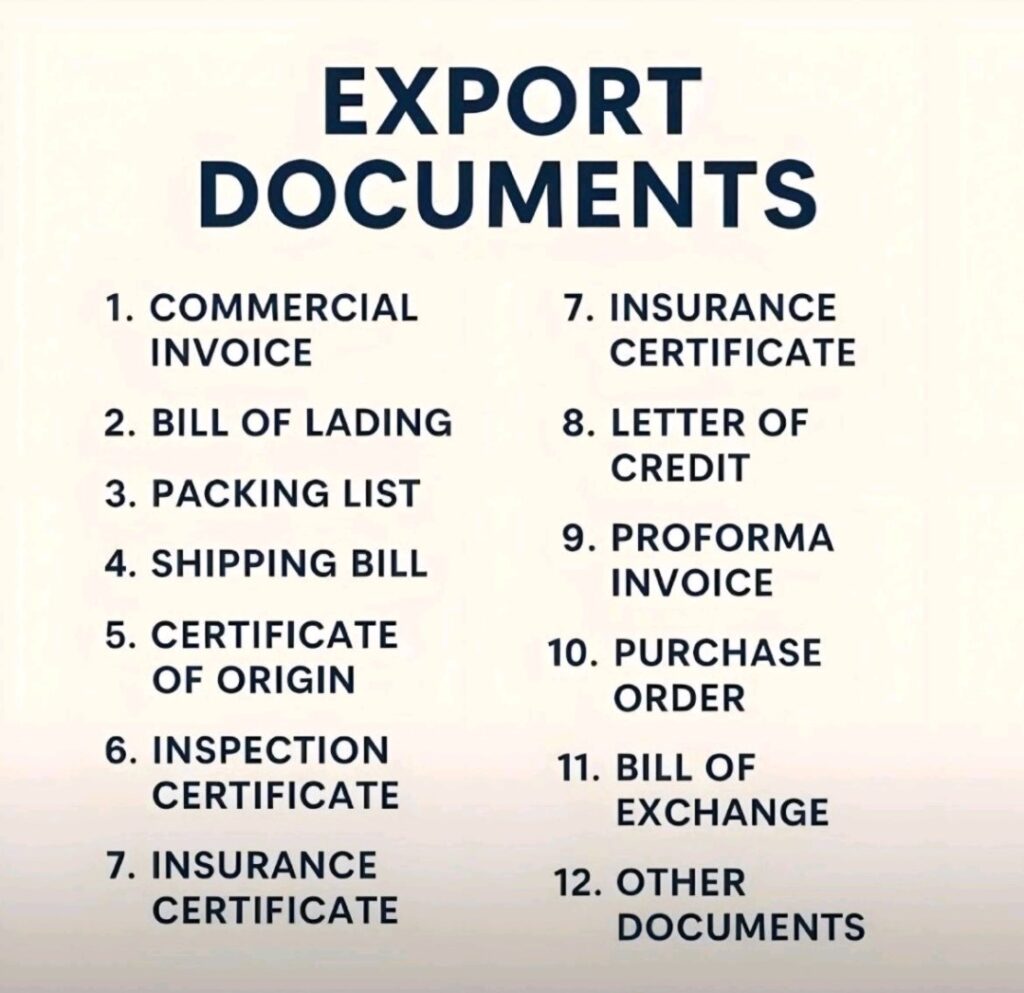WITTING
SKU (Stock Keeping Unit): A unique code that identifies a specific product, allowing businesses to track inventory and sales.
FIFO (First In, First Out): An inventory method where the oldest items in stock are sold or used first.
FEFO (First Expired, First Out): A variation of FIFO, particularly for perishable goods, where the item with the earliest expiration date is used or sold first.
GRN (Goods Receipt Note): A document that confirms the receipt of goods from a vendor.
PO (Purchase Order): A document sent by a buyer to a seller, formally requesting goods or services.
STO (Stock Transfer Order): An order to move stock from one location to another within the company's own network.
MRP (Maximum Retail Price): The highest price at which a product can be sold to the end consumer.
FOC (Free of Cost): An item or service provided at no cost.
RTV (Return to Vendor): The process of sending goods back to the supplier or vendor. RTW (Return to Warehouse): An instruction to send items back to a storage or warehouse location.
DC (Distribution Center): A specialized warehouse that serves as a hub for distributing products to retailers or customers.
DSD (Direct Store Delivery): A logistics method where a manufacturer or vendor delivers products directly to a retailer, bypassing the company's own distribution centers.
SLA (Service Level Agreement): A contract between a service provider and a client that defines the level of service expected.
POS (Point of Sale): The place and system where a retail transaction is completed, often involving a cash register or terminal.
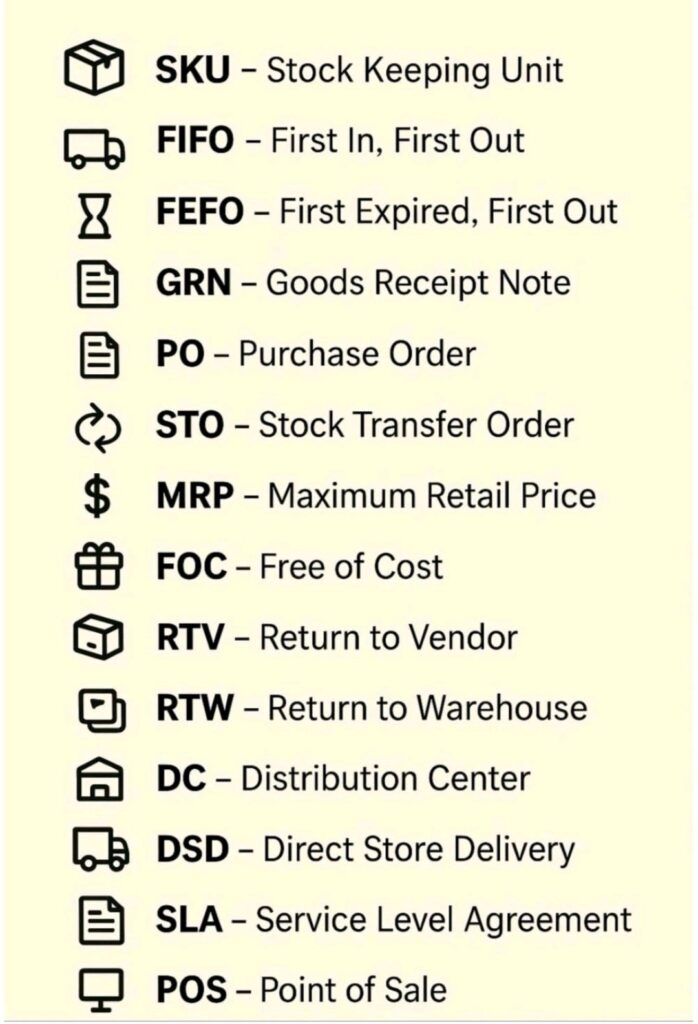
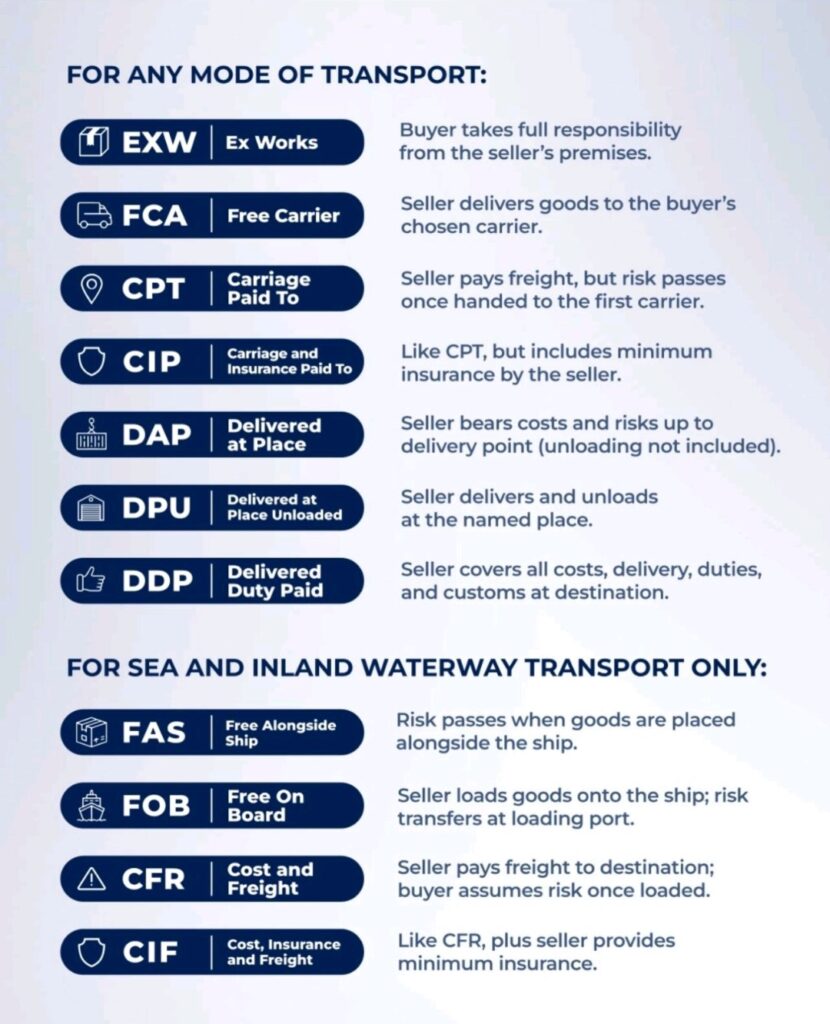
EXW - Ex Works Buyer takes full responsibility from seller's premises.
FCA - Free Carrier Seller delivers goods to the buyer's chosen carrier.
CPT - Carriage Paid To Seller pays freight; risk transfers when handed to the first carrier.
CIP - Carriage and Insurance Paid To Like CPT, but includes minimum insurance provided by the seller.
DAP - Delivered At Place Seller covers costs and risks to the delivery point (unloading excluded).
DPU - Delivered at Place Unloaded Seller delivers and unloads at the named place.
DDP - Delivered Duty Paid Seller handles all responsibilities, including customs and duties.
For Sea & Inland Waterway Transport Only:
FAS - Free Alongside Ship Risk transfers when goods are placed alongside the ship.
FOB - Free On Board Seller loads goods onto the vessel; risk transfers at loading port.
CFR - Cost and Freight Seller pays freight; buyer assumes risk once shipped.
CIF Cost, Insurance & Freight Like CFR, but seller provides minimum insurance as well. FOB Free On Board
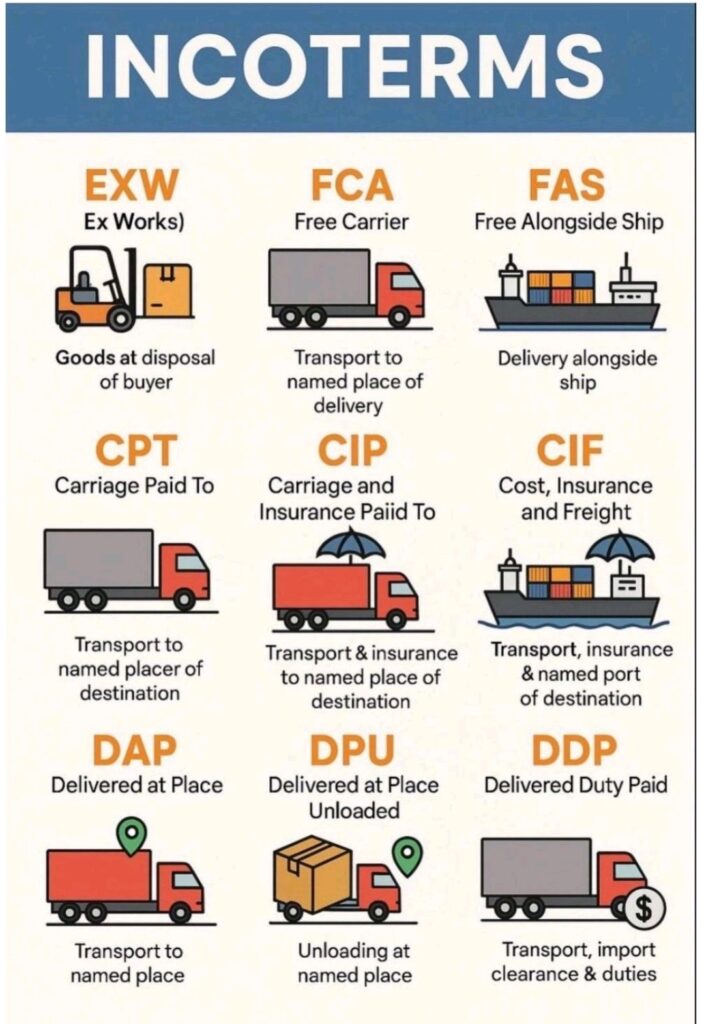
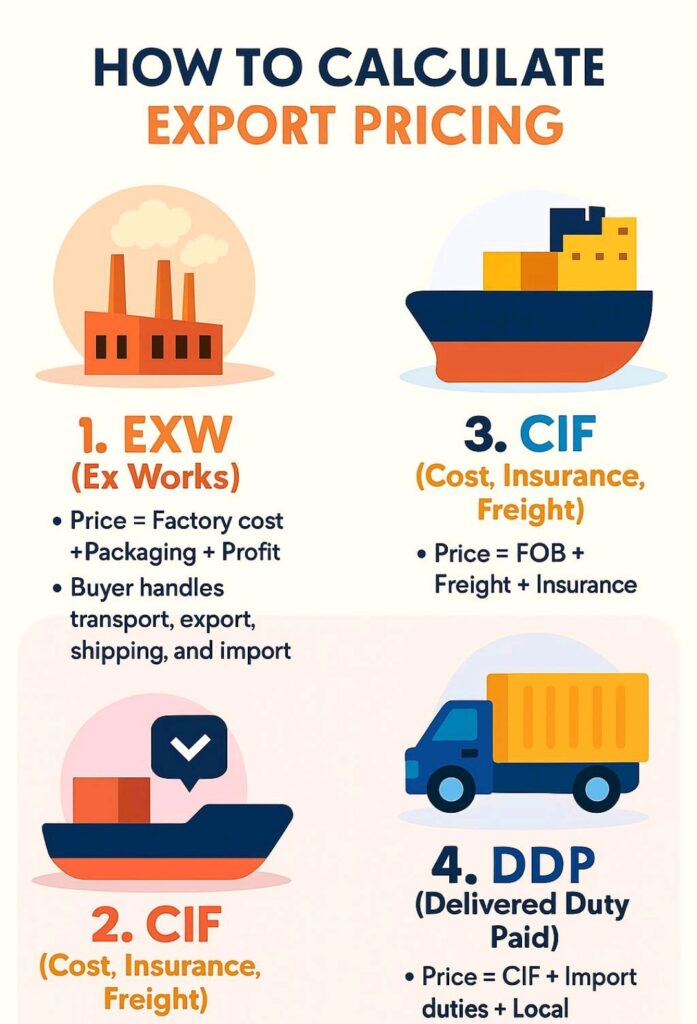
Logistics isn't just about transportation - it's a complete network ensuring smooth product movement and efficiency. Here are the main types:
Inbound Logistics - Managing materials and goods coming into a business from suppliers.
Outbound Logistics - Handling finished products moving out to customers or retailers.
Third-Party Logistics (3PL) - Outsourcing logistics operations to specialized service providers.
Reverse Logistics - Process of returning goods for repair, recycling, or disposal.
Green Logistics: Focuses on reducing the environmental impact of logistics operations by using eco-friendly transport, energy-efficient warehouses, and sustainable packaging.
Just-In-Time (JIT) Logistics: Delivers materials or products exactly when needed to reduce inventory costs and storage space, ensuring efficient and lean operations.
Distribution Logistics - Ensuring products reach the right place, at the right time, in the right condition.

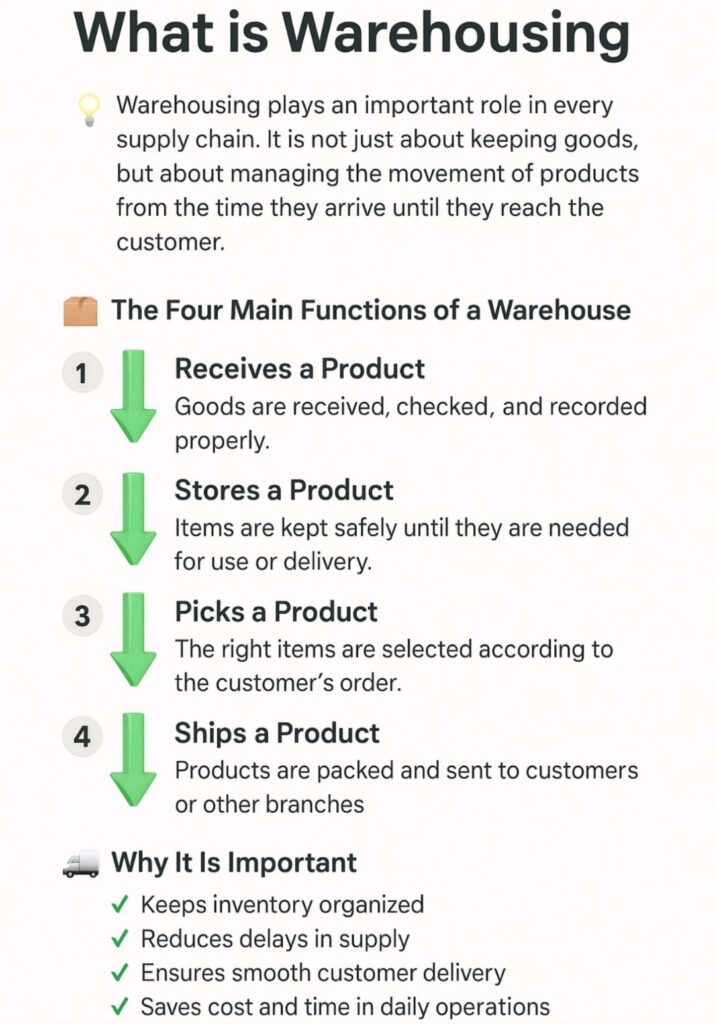
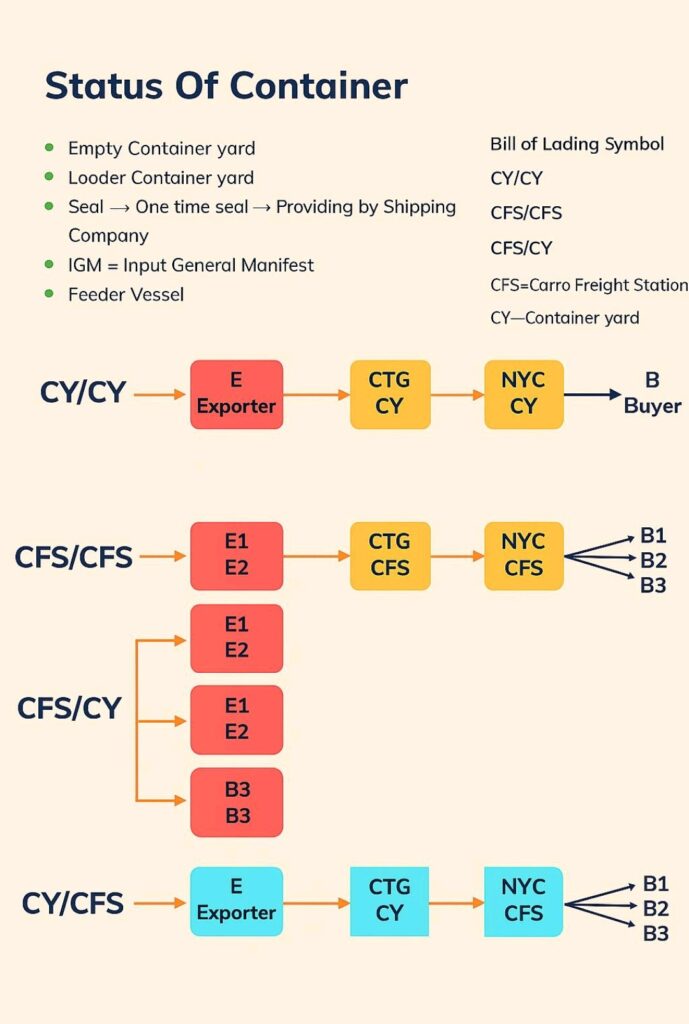

Step 1 - Order & Export Planning Confirm buyer order (PO / LC), choose transport mode, check regulations.
Docs: Purchase Order, Proforma Invoice, Export Contract.
Step 2- Product Preparation & Packaging Make goods export-ready and mark correctly. quality check, pack, label
Docs: Packing List, Inspection Certificate.
Step 3-Customs & Export Documentation Get those approvals! File the shipping bill and submit docs to your CHA.
Docs: Invoice, Packing List, Shipping Bill, Export Declaration.
Step 4 - Transport to Port Move the cargo to the port (don't forget that E-Way Bill).
Docs: Lorry Receipt, Gate Pass, Transport Invoice.
Step 5-Customs Clearance & Loading Goods inspected, cleared, and loaded most one of the stressful yet satisfying stages!
Docs: Bill of Lading / Airway Bill, Certificate of Origin, Insurance.
Step 6-International Transit Goods sail or fly to the destination. Tracking becomes your new best friend.
Docs: BL / AWB, Invoice, Packing List.
Step 7-Import Customs at Destination The importer takes over: pays duties, clears cargo, and collects delivery order.
Docs: BL/AWB, COO, Import Declaration, Invoice.
Step 8-Last-Mile Delivery Goods finally reach the buyer's warehouse. Payment done
Docs: Delivery Order, Proof of Delivery, Payment Copy.

